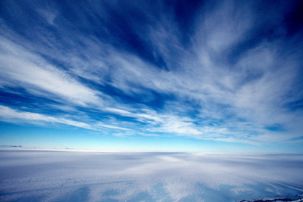Lesson summary
In this activity students investigate the different properties of solids, liquids and gases. They explore what happens when rising temperatures cause ice on land and in the sea to melt. They conduct two experiments, one looking at sea ice and the other looking at land ice and observe how the melting of this ice affects the sea level.
Learning intentions:
Students will...
- build an understanding of states of matter
- explore changing states of matter
- apply their scientific knowledge to predict how rising temperatures will impact our climate.
Lesson guides and printables
Lesson details
Curriculum mapping
Australian Curriculum content descriptions:
Year 5 Science:
- Solids, liquids and gases have different observable properties and behave in different ways(ACSSU077)
- With guidance, pose questions to clarify practical problems or inform a scientific investigation, and predict what the findings of an investigation might be (ACSIS231)
- With guidance, plan appropriate investigation methods to answer questions or solve problems (ACSIS086)
- Compare data with predictions and use as evidence in developing explanations (ACSIS218)
- Communicate ideas, explanations and processes in a variety of ways, including multi-modal texts(ACSIS093)
Year 6 Science:
- Changes to materials can be reversible, such as melting, freezing, evaporating; or irreversible, such as burning and rusting (ACSSU095)
- With guidance, pose questions to clarify practical problems or inform a scientific investigation, and predict what the findings of an investigation might be (ACSIS232)
- Use equipment and materials safely, identifying potential risks (ACSIS105)
- Compare data with predictions and use as evidence in developing explanations (ACSIS221)
- Communicate ideas, explanations and processes in a variety of ways, including multi-modal texts (ACSIS110)
Syllabus Outcomes: SC4-15LW, SC4-12ES, SC4-10PW.
Time required: 60 mins
Level of teacher scaffolding: High – conduct experiment, facilitate discussion and oversee activity
General capabilities: Critical and creative thinking
Resources required
- Ice cubes
- Waterproof tray
- Plastic sheet
- Sticky tape
- Scissors
- Water
- Black marker
- Ruler long enough to fit most of the width of the tray,
- Gravel (optional)
- Internet access
- Student worksheet
Additional info
This lesson has been created in partnership with WWF-Australia. Earth Hour is the world’s largest community-driven climate change campaign. At the centre of Earth Hour is switching off lights to show a commitment to taking action.
Thousands of teachers use Earth Hour’s education program to enrich their curriculum and provide pathways for young people to create change in their world.
For the most up to date Earth Hour dates, times, and events, check here.


Welcome back!
Don't have an account yet?
Log in with:
By signing up to Cool.org you consent and agree to Cool's privacy policy to
store, manage and process your personal information. To read more, please see
our privacy policy here(Opens in new tab).
Create your free Cool.org account.
Many of our resources are free, with an option to upgrade to Cool+ for premium content.
Already have an account?
Sign up with:
By signing up to Cool.org you consent and agree to Cool's privacy policy to
store, manage and process your personal information. To read more, please see
our privacy policy here(Opens in new tab).